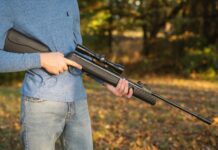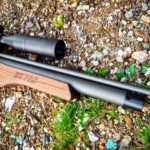“Exploring the World of Air Rifles: Unveiling the Projectiles These Mighty Firearms Shoot!”
what do air rifles shoot

Air rifles are firearms that use compressed air or gas to propel projectiles. These rifles can shoot a variety of ammunition types, including pellets, BBs, and darts. The type of ammunition used depends on the specific design and purpose of the air rifle.
Pellets are the most common type of ammunition for air rifles. They are small cylindrical or round projectiles made of lead or alloy. Pellets come in different calibers, ranging from.177 to.50 caliber, and they can be either diabolo-shaped (with a larger head and narrow waist) or round-nosed. Pellets offer accuracy and consistency in shooting and are suitable for various applications such as target shooting, pest control, and small game hunting.
BBs are another type of ammunition used in air rifles. They are small spherical projectiles typically made of steel or copper-plated steel. BBs are mainly used for recreational purposes like plinking (shooting at targets for fun) and casual target practice. Compared to pellets, BBs generally have lower accuracy due to their shape but can still be effective within shorter ranges.
In conclusion, air rifles shoot projectiles called pellets or BBs. These small metal or plastic objects are propelled by compressed air, making air rifles a popular choice for recreational shooting and pest control. With various types and sizes available, it’s important to use the appropriate ammunition for safety and effectiveness.






































![Air gun 101: The differences between .177 & .22 – Which jobs they do best ? [Infographic]](https://airgunmaniac.b-cdn.net/wp-content/uploads/2024/11/1773-150x150.jpeg)

